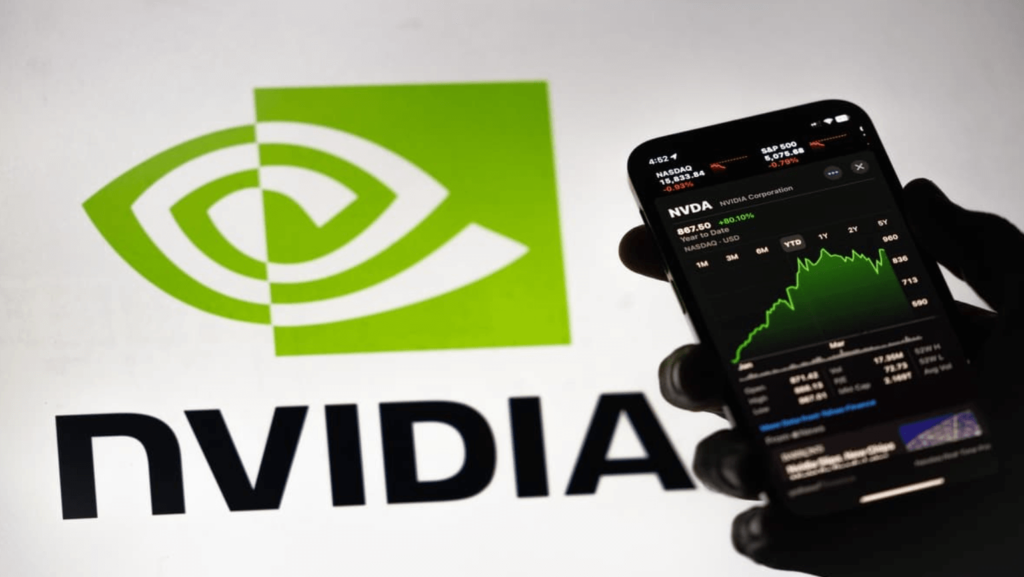Nvidia Stock Analysis Price Trends & Forecast

The world of technology is ever-evolving, and within that universe, Nvidia has emerged as a dominant force. Known primarily for its graphics processing units (GPUs), Nvidia has expanded into artificial intelligence (AI), data centers, and autonomous vehicles, all of which have fueled investor interest. In this comprehensive article, we’ll explore the journey and performance of Nvidia’s stock, its historical and projected valuation, and the various market factors that influence its price. We’ll also examine the reasons behind short-term fluctuations, such as “why is Nvidia stock going down today,” and analyze its technical movement using the Nvidia stock chart. For investors, understanding the Nvidia’s stock forecast and Nvidia’s stock earnings report can provide crucial insights for making informed decisions.
The Rise of Nvidia: A Market Powerhouse in Tech
Nvidia Corporation (NASDAQ: NVDA) was founded in 1993, but its major rise in prominence began in the mid-2000s when gaming demand for powerful GPUs skyrocketed. The company’s core product, the GeForce GPU, helped Nvidia dominate the gaming industry. But the last decade has seen Nvidia branch out into far more lucrative territories such as artificial intelligence, data processing units (DPUs), and even automotive AI systems. This diversification has significantly impacted the Nvidia stock price, pushing it to historic highs, particularly during tech booms.
In recent years, Nvidia’s involvement in AI has given it an entirely new growth trajectory. With the explosion of generative AI models and increasing enterprise demand for accelerated computing, Nvidia has become the backbone provider of the hardware that powers this new wave of technological transformation. As such, Nvidia stock has become a favorite among institutional and retail investors alike.
Nvidia Stock Price: A Look at Historical and Recent Trends
The Nvidia stock price has seen substantial growth over the past five years. From trading under $100 in early 2020 to peaking well above $1,200 before its most recent stock split, Nvidia’s trajectory has been staggering. This growth has largely been fueled by several strong earnings reports, rapid AI adoption, and expansion into new markets.
However, like all stocks, Nvidia is not immune to volatility. Several macroeconomic factors such as interest rate hikes, geopolitical tensions, and supply chain disruptions have at times contributed to downward pressure on the Nvidia stock price. Nonetheless, over the long term, the upward trend has remained intact, with dips typically being treated as buying opportunities by seasoned investors.
For investors wondering “why is Nvidia stock going down today,” the answer often lies in short-term market sentiment, profit-taking after earnings, or broader sector sell-offs rather than a fundamental flaw in the company’s business model. Daily price movements can be misleading if not viewed within the broader context of Nvidia’s long-term growth potential.
Nvidia Stock Chart: Understanding Technical Patterns
The Nvidia stock chart is an essential tool for traders and long-term investors alike. It helps in identifying support and resistance levels, trend lines, and potential entry or exit points. Over the years, Nvidia stock has demonstrated strong bullish patterns, particularly forming consistent higher highs and higher lows.
Technical analysis of the Nvidia’s stock price chart shows several periods of consolidation followed by strong breakout patterns, especially following major product announcements or earnings reports. These chart movements can often be predictive of future performance when combined with fundamental analysis.
Also Read: How Personalized Products Are Changing the Game and Driving Success
Furthermore, the Nvidia stock chart often exhibits classic technical indicators like the Moving Average Convergence Divergence (MACD) and Relative Strength Index (RSI) confirming bullish or bearish momentum. For example, when Nvidia’s RSI moves above 70, it often signals overbought conditions, which could lead to a short-term pullback.
Nvidia Stock Earnings Report: A Critical Financial Indicator
Earnings reports are among the most influential events affecting Nvidia stock. Released quarterly, the Nvidia stock earnings report details revenue, net income, EPS (earnings per share), and forward guidance. In recent quarters, Nvidia has consistently beaten analysts’ expectations, primarily driven by record demand in its data center and AI business.
For example, in the most recent Nvidia’s stock earnings report, the company reported revenue growth of over 100% year-over-year, with data center revenue accounting for a large portion. The report also provided strong forward guidance, anticipating even higher demand in the coming quarters. Such performance often results in a surge in Nvidia’s stock price post-earnings.
However, any signs of slowing growth, rising costs, or reduced margins can lead to short-term declines. Investors should carefully read through earnings call transcripts to understand the management’s outlook and challenges, which are not always reflected in headline numbers.

Nvidia Stock Forecast: Analyst Predictions and Market Sentiment
When it comes to the Nvidia stock forecast, most Wall Street analysts remain bullish, with some predicting a long-term price target exceeding $1,500 post-stock split. This optimistic outlook is based on the continued expansion of Nvidia’s AI, gaming, and data center segments.
According to many market research firms, Nvidia is likely to maintain its dominant market share in the AI chip industry for at least the next five years. This gives analysts confidence in the Nvidia stock forecast, projecting double-digit annual growth in both revenue and net income.
Despite bullish long-term forecasts, investors must be prepared for short-term volatility. Factors like regulatory changes, global economic slowdowns, and tech sector rotation can temporarily depress stock prices. It’s important to differentiate between temporary market sentiment and fundamental long-term prospects.
Nvidia Stock Split: What It Means for Investors
A significant event in Nvidia’s recent history is the Nvidia stock split. In 2021, Nvidia’s executed a 4-for-1 stock split, and more recently in 2024, it announced another split following a rapid price appreciation that took the stock above $1,000. A stock split does not change the overall value of the company but makes shares more accessible to retail investors.
Post-split, Nvidia stock typically experiences increased trading volume and often a short-term price boost as more investors find the lower price point attractive. The Nvidia’s stock split also reflects the company’s confidence in its growth trajectory, signaling to investors that management believes the current valuation is justified.
While a stock split can sometimes trigger speculative buying, long-term investors should still base their decisions on fundamentals such as earnings growth, innovation, and market leadership.
Why Is Nvidia Stock Going Down Today? Understanding Daily Market Moves
One of the most commonly searched queries about Nvidia is: “Why is Nvidia stock going down today?” This question reflects the market’s short-term focus, but the answers often lie in broader market mechanics rather than company-specific issues.
Nvidia’s stock may decline on a given day due to a number of factors:
- Profit-taking after strong earnings or price surges.
- Negative analyst commentary or a downgrade.
- Macroeconomic news such as interest rate hikes, inflation data, or geopolitical instability.
- Sector-wide sell-offs in technology or semiconductors.
It’s essential to distinguish between noise and substance. A daily dip in the Nvidia’s stock price doesn’t necessarily reflect a change in the company’s fundamentals. Investors should consider such moves within the broader Nvidia stock chart trends and evaluate whether the decline represents a buying opportunity.
Conclusion: Nvidia Stock as a Long-Term Investment
Nvidia has cemented itself as a cornerstone of the modern tech economy. From dominating GPU markets to powering the AI revolution, its innovation pipeline remains robust. For investors, Nvidia stock represents a compelling blend of growth potential, technological leadership, and financial strength.
By closely monitoring the Nvidia’s stock price, studying the Nvidia’s stock chart, and analyzing quarterly Nvidia stock earnings reports, investors can make informed decisions. Understanding the reasons behind daily volatility and keeping an eye on Nvidia’s stock forecast reports from analysts further equips investors to navigate the complex yet rewarding world of tech stock investing.
Whether you’re a long-term investor or a short-term trader, Nvidia’s stock offers a dynamic and potentially rewarding opportunity—if approached with careful analysis and strategic timing.



